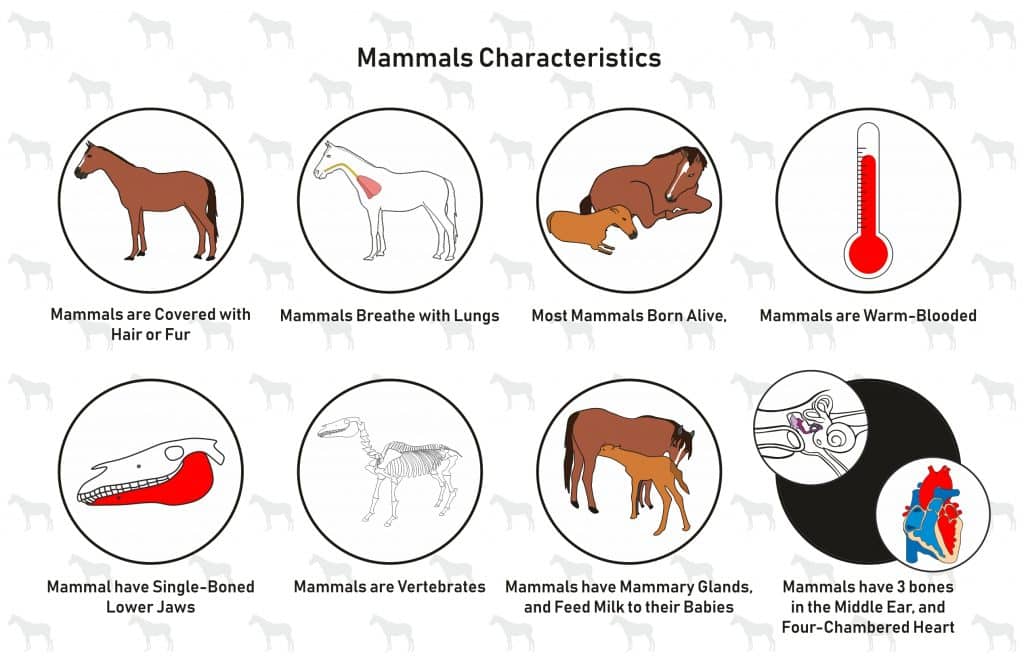Section 3: Mammals

Like all vertebrates, mammals also have a spine that provides the primary support for their bodies. Mammals are endothermic and have developed body systems and specialized traits, making them a special category of vertebrates. Mammals have lungs, a four-chambered heart, a two-loop circulatory system, large brains, and a complex nervous system, and they use internal fertilization. They can swim in the ocean, fly in the sky, run in the Sahara, or walk in the fields.
All mammals have hair at some point during their development, with most mammals having hair their entire life. Mammalian hair is made up of a protein called keratin and serves at least four functions for an animal. First, hair acts as insulation and slows heat exchange with the environment. Second, hair can serve as a sensory receptor. For example, specialized hairs, such as whiskers or “vibrissae,” let an animal know when it is in contact with an object. Third, hair provides some protection by adding a layer to protect from the sun or being coarse and sharp to deter predators. Finally, the fourth function is used by animals through the color and pattern of their hair. For instance, it may serve as camouflage for the predator or the prey during an attack. Finally, it can also be used to communicate social information, for example, as a warning mechanism or to prove worth during mating season.
Mammals have specialized teeth that vary in shape and size to carry out the numerous jobs they’re designed to do. The size and shape of the teeth provide clues as to which mammal they belong to. Herbivores, like deer and horses, are plant-eating mammals with incisors that cut and molars that grind food up. Carnivores, like lions, are meat eaters with sharp canines that can tear flesh easily. Omnivores, like chimpanzees, eat plants and animals using a variety of teeth.
Most mammals are born alive and fed milk produced by organs in the mother’s body called mammary glands. Milk provides the nutrients a baby needs to thrive. A baby is born with the innate ability to suckle and will begin to drink from its mother’s nipples. Mammals spend a lot of time caring for their young.
Three main groups of mammals differ in the way their young develop. Marsupials, like kangaroos and koalas, are mammals that give birth to their babies, called joeys, during very early stages of development, and they are extremely tiny when born. They then continue to develop in a pouch on the mother’s body until they are ready for the outside world. Anteaters and duck-billed platypus are monotremes that lay leathery eggs but lack nipples. They “sweat” milk through patches on their stomachs. Most mammals are placental mammals, like rabbits, lions, and humans. They develop from an embryo connected to a placenta by an umbilical cord. The placenta nourishes a developing baby before it’s born.
Review:
- Compare herbivores to carnivores and omnivores.
- Identify two characteristics of marsupials.
- What is the function of the placenta?
